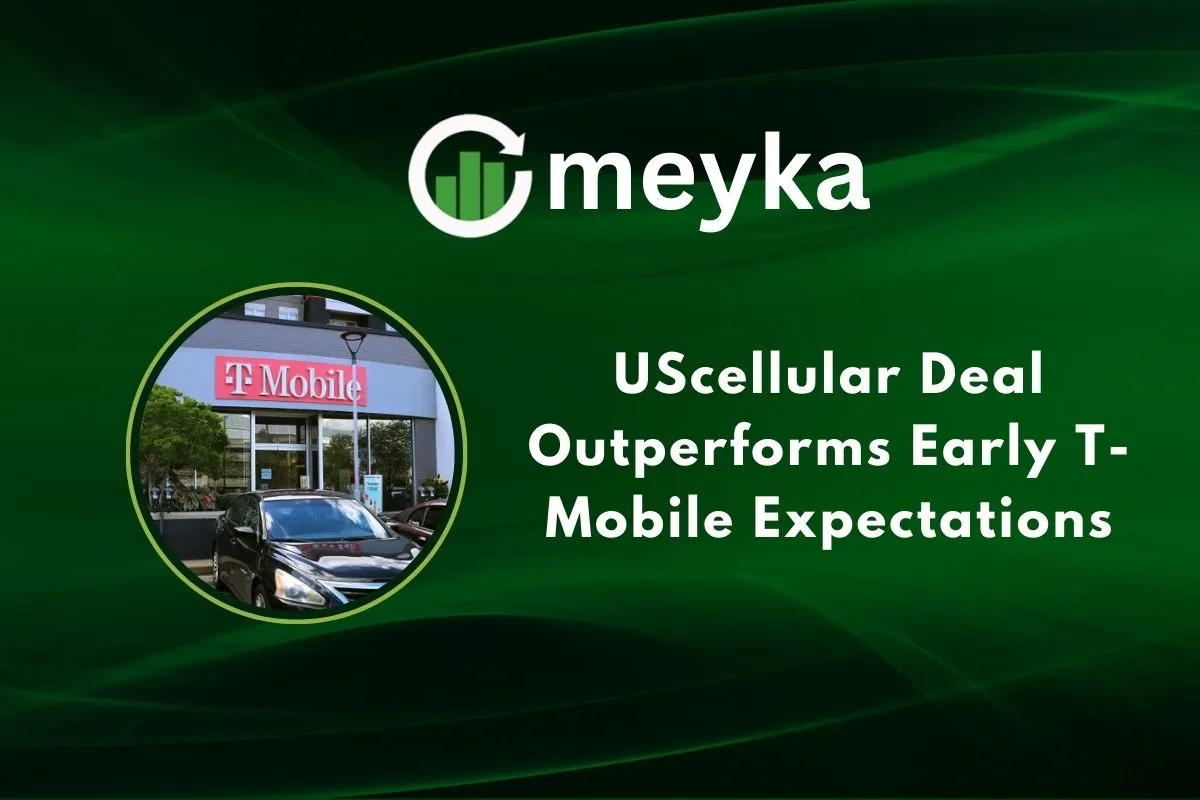UScellular Deal Outperforms Early T-Mobile Expectations
In August 2025, T-Mobile completed its $4.3 billion acquisition of UScellular’s wireless business, exceeding the early forecasts for the transaction. Initially, analysts anticipated modest gains from the deal. However, T-Mobile now projects an additional $400 million in service revenue for the third quarter alone, along with $1.2 billion in annual cost synergies, surpassing the original $1 billion estimate.
This unexpected success has reshaped the landscape of the U.S. wireless industry. T-Mobile’s swift integration of UScellular’s assets has not only expanded its customer base and network coverage but also positioned the company as a formidable competitor to Verizon and AT&T. The deal has allowed T-Mobile to enhance its 5G capabilities and improve service quality, particularly in underserved regions.
The details of the UScellular acquisition, examining the factors contributing to its success, the financial implications for both companies, and the strategic advantages gained by T-Mobile. We will also explore how this acquisition is reshaping the competitive dynamics of the U.S. telecom market.
Background of the Deal
The $4.3 billion deal, finalized on August 1, 2025, involved T-Mobile acquiring UScellular’s wireless operations, including its customer base, retail stores, and approximately 30% of its spectrum assets. The deal was finalized with $2.6 billion paid in cash and $1.7 billion taken on as debt.
Initially, analysts projected modest gains from the acquisition. However, T-Mobile’s swift integration and strategic planning have led to significantly better-than-expected outcomes. The company now anticipates a $400 million increase in service revenue for Q3 2025 and has raised its annual cost synergy target to $1.2 billion, up from the previous estimate of $1 billion.
Key Factors Driving Outperformance
Multiple elements have played a role in making the UScellular deal successful:
- Subscriber Growth: The acquisition added over 4 million customers to T-Mobile’s base, expanding its reach in rural and underserved areas.
- Revenue Impact: T-Mobile expects an additional $400 million in service revenue for Q3 2025, driven by the integration of UScellular’s customers and assets.
- Operational Synergies: The company anticipates $1.2 billion in annual cost synergies, achieved through streamlined operations and infrastructure optimization.
- Market Response: The deal has been positively received by investors and analysts, reflecting confidence in T-Mobile’s strategic direction and execution.
Financial Implications
The acquisition has had significant financial implications for both companies:
- T-Mobile: The company expects a $400 million increase in service revenue for Q3 2025 and has raised its annual cost synergy target to $1.2 billion. The integration is now projected to finish in two years, earlier than the initial three-to-four-year plan.
- UScellular: The deal earned UScellular a cash amount of $2.6 billion and debt worth 1.7 billion. The company has rebranded as Array Digital Infrastructure, focusing on its tower and spectrum leasing business.
Strategic Significance
The acquisition has boosted T-Mobile’s competitiveness in multiple areas:
- Network Expansion: The agreement has improved T-Mobile’s network reach, especially in rural regions where UScellular was already well-established.
- 5G Capabilities: The integration of UScellular’s spectrum assets has bolstered T-Mobile’s 5G capabilities, enabling faster and more reliable service.
- Customer Base Growth: The addition of over 4 million customers has expanded T-Mobile’s market share and customer base.
- Operational Efficiency: The anticipated $1.2 billion in cost synergies will improve T-Mobile’s operational efficiency and profitability.
Conclusion
T-Mobile’s acquisition of UScellular has proven to be more successful than initially anticipated, with significant financial and strategic benefits. The deal has expanded T-Mobile’s network coverage, enhanced its 5G capabilities, and increased its customer base, positioning the company as a stronger competitor in the U.S. telecom market. The positive outcomes of this acquisition underscore the importance of strategic planning and execution in achieving business success.
FAQS:
People choose Verizon because it has strong coverage, especially in rural areas. Its network is reliable, calls rarely drop, and internet speeds are consistent even in busy places.
UScellular customers will move to T-Mobile’s network. They may get better coverage, faster 5G service, and new plans. Accounts and phones will be updated gradually.
T-Mobile is buying UScellular to grow its customer base and expand network coverage. T-Mobile aims to improve 5G coverage and compete more effectively with Verizon and AT&T.
Disclaimer:
This content is for informational purposes only and is not financial advice. Always conduct your research.






